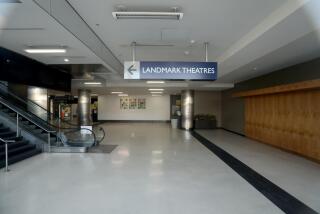Haven for Homeless Vets Opens
- Share via
A cavernous building at the West Los Angeles Veterans Affairs center--vacant for two decades except for occasional visits by film crews--today begins life anew as a center where homeless veterans willing to commit up to two years to rebuild their lives can receive free drug rehabilitation, housing and job training.
The 60,000-square-foot New Directions Regional Opportunity Center will mark its near completion with a ceremony this morning to be attended by Mayor Richard Riordan and a dozen other political luminaries, officials of the center said. The facility received its $5.4-million renovation budget through the collaboration of eight city, county and federal agencies and Amvets, a private veterans organization.
Veterans will be referred to the new 156-bed center from the nearby VA hospital, as well as the cities of Los Angeles, Beverly Hills, Culver City and Santa Monica, which all contributed funds.
“The VA has said they could fill us up overnight if we wanted them to, but that’s not our interest,” said Toni Reinis, the center’s executive director. “We’re interested in building a meaty program that really helps people.”
Residents will take classes offered at the facility by UCLA Extension, L.A. Trade Tech College and the Los Angeles Unified School District’s Metropolitan Skills Center, Reinis said. The goal will be for veterans to leave the center within two years for jobs that pay $10 to $15 an hour.
The first 12 residents will be moved into the remodeled 1929 three-story brick building in the next few weeks, said development director Andrew Parker, as soon as furniture can be assembled and an occupancy certificate obtained. He said the building will be filled to capacity in about a year.
The 5-year-old New Directions organization obtained the building under the 1987 McKinney Act, which allows federal properties to be leased as homeless shelters.
All potential residents must be homeless veterans with substance-abuse problems and “they must be able to participate in their own recovery,” Parker said. The clients “have basically lost everything by the time they come to us. They’ve lost families, lost jobs and lost faith.”
Reinis said the program includes group counseling sessions and shared rooms. “We don’t believe in SROs [single-room occupancy units] for this population because that’s what this population likes to do is lock themselves away,” she said.
Most residents will graduate from the program within nine months, Reinis said.
More to Read
Sign up for Essential California
The most important California stories and recommendations in your inbox every morning.
You may occasionally receive promotional content from the Los Angeles Times.










